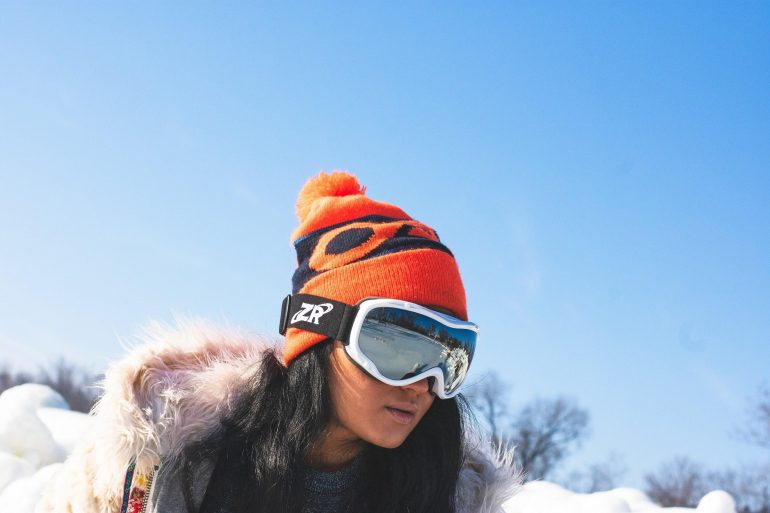Wearable tech now a must for adventure winter sports
Wearable devices have become a growing and popular trend among health fanatics and are one of the fastest-advancing sectors of the technology industry today. The new agile technology allows individuals to track their daily workouts and movements which they can monitor through data and metrics provided to their smartphones. Available in an array of different forms, wearables can be purchased and used as basic fitness trackers or more expensive advanced smartwatches which are great for sports enthusiasts. Firstly it would be wise, to begin with understanding what wearable devices are and how they work.
What is wearable technology?
Wearable technology is a range of worn devices. They feed into the state of mind of being connected to one’s self. They are designed to house smart sensors which track movement and biometrics. These are then synced wirelesses to our smartphones via Bluetooth. Wearables can connect through Wi-Fi connectivity or mobile data connections.
In most cases, the sensors on the device connect through contact with the skin. They aim to help users achieve goals such as staying fit, active and aiding weight loss. The wearables can also help individuals elevate not just their physical health but also their mental health.
Previously wearable technology meant tracking activity through a motion sensor. However, advancements in technology mean that wearables now have slightly more powerful sensors which require direct skin contact as mentioned above. This has opened opportunities for new wearables that can be worn on different parts of the body. The most popular of course is the wrist, but there are some wearables out there can be used by attaching them to fingers, chest, arms, forearms, eyes and ears. The variety of different body parts indicates how wide the sector has grown for technology and proves why it is so popular amongst sports enthusiasts.
There is a range of different wearables to purchase on the market today that can be ideal to use for winter activities. Here is a variety of different wearables to help monitor activity and capture amazing pictures and videos.
Smartwatches
Smartwatches are devices that are worn on wrists, they are made to look like conventional watches, but instead, they can connect to your smartphone. They can behave like an extension of your smartphone, allowing users to carry out similar functionalities such as reading messages. Not surprisingly, Apple is dominating the smartwatch market with its Apple Watch, even after a delay in entering the smartwatch market in comparison to its competitors.
Smartwatches provide users with the ability to take calls and view notification without needing their smartphones which is what makes them perfect for winter sports like skiing. They also have inbuilt health monitors that can provide users with metrics on their physical activity while skiing or taking part in winter activities. Heart rate monitors in the smartwatches can also provide vital information like oxygen levels and remind users to take water breaks.
Most watches come with GPS to provide location services. This is highly recommended and beneficial when doing winter sport in remote areas. Often we hear of tragic accidents that take place in winter sports such as skiing, leaving people trapped for hours. The depth of snow and its uncertainty can sometimes create dangerous situations. Location service and sharing personal location live via the use of a smartwatch can mean the difference between life and death. If a skier goes missing the smartwatch will make it easier to locate them for urgent medical assistance.
Fitness trackers
Fitness trackers remain popular among individuals who wish to track their progress through metrics such as heart rate, estimated calorie burn and steps by receiving this information on their smartphones through notifications. Fitness trackers are great because they offer super-advanced data and have a longer battery life compared to smartwatches and smartphones. Data collected from fitness trackers can help winter sports athletes measure their health. This is important because conditions during winter sport differ from regular sports.
The climate and temperature are different, which why their physical requirements need to be tailored to withstand colder climates. They also need to be able to monitor how their body functions at these temperatures and be able to compare their metrics each time. Fitness trackers are also relatively cheaper than smartwatches.
GoPro’s
GoPros’ are small action sports cameras which are leading the action camera market today and offer top-performing high definition specification wearable cameras. GoPros are designed to help users seamlessly record and share moments from their most extreme experiences, which of course works well for winter sports. The cameras can be brought with accessories such as helmet mounts, handheld gimbals and chest harnesses to mount the camera onto. Using a chest or helmet mount is one of the best ways to capture and create fantastic skiing videos.
Ski goggles with displays
The integration of computers into ski goggles and snowboard goggles has seen recent developments. New goggles can now display information projected onto the inside of the goggles. Data such as speed, airtime for jumps and much more are displayed on the inside of the goggles lens. The technology is so advanced that users can read messages in the goggles and reply to them using a remote toggle.
Some goggles also let users sync via Bluetooth with their smartphones to view music playlists and change song and volume. However, its most significant and primary use is that the goggles can log location, making it easy to find your friends and family on the mountain. The device also lets users share their location on social media.







